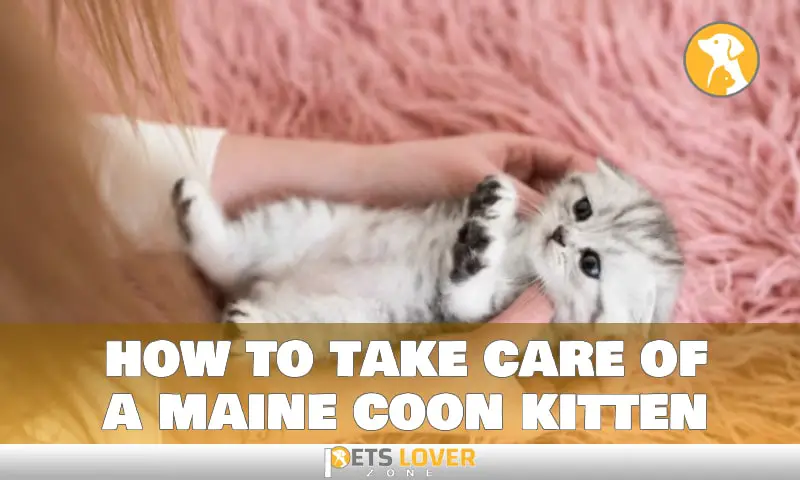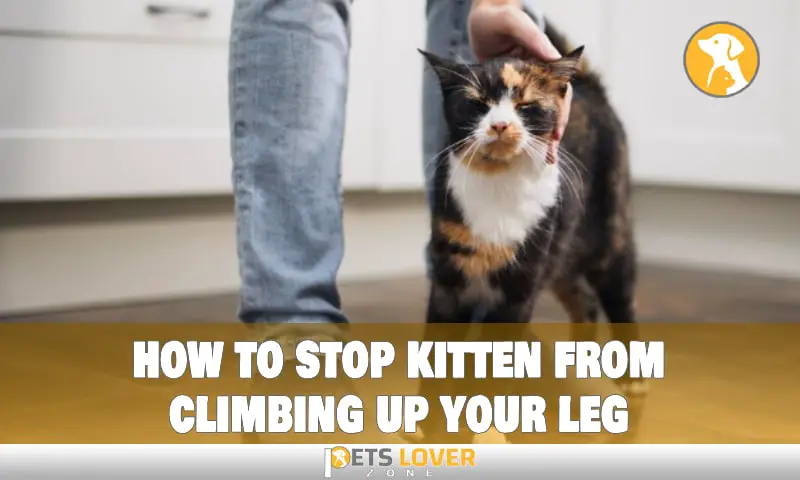To wean your cat off temptations, gradually decrease the amount you give until they no longer receive any. Start by reducing the number of daily treats and replacing them with healthier alternatives, such as plain cooked chicken or small pieces of vegetables like green beans or carrots.
Ensure your cat has plenty of water at all times, as this can help prevent them from feeling hungry and craving temptations. You can also try feeding your cat smaller but more frequent meals throughout the day rather than one or two large meals.
Consistency is key, and with patience and persistence, your cat can learn to enjoy healthier treats and a balanced diet. Cats love treats just as much as humans do, and it’s tempting to spoil them with their favorites. However, excessive consumption of these treats can lead to health issues like obesity, dental problems, and diabetes. Therefore, it’s crucial to wean your cat off temptations slowly but surely, without causing stress or discomfort. In this article, we share some simple and effective tips that can help your cat make healthier food choices and enjoy treats that are good for them.
Understanding Temptations And Their Effects On Cats
What Are Temptations, And What Is Their Effect On Cats?
Temptations are treats available in various flavors that are high in calories, and cats find them irresistible. In general, cats love to eat, and these treats are no exception. However, feeding your cat temptations can have some adverse effects.
These effects include:
- Reducing their appetite for regular cat food, leading to an unbalanced diet and malnutrition.
- Obesity and weight gain, which can lead to diabetes, heart disease, and other health issues.
- Dental problems, as temptations can stick to the teeth and cause plaque buildup.
Ingredients In Temptations That Make It Addictive For Cats
Temptations contain special flavors that are highly palatable to cats. These flavors come from ingredients such as meat by-products, animal liver, and various sugars and starches. Some of the specific ingredients that make temptations so addictive for cats are:
- Chicken liver flavor: This flavor is rich in protein and highly enticing to cats, making it challenging for them to resist.
- Corn gluten meal: is used to increase the product’s protein content and provide texture and taste.
- Animal digest: This ingredient is a mixture of partially digested animal tissue that is highly flavorful and helps increase the palatability of the treats.
The Potential Negative Impact Of Temptations On Cats’ Health
While it may seem harmless to give your cat temptations now and then, these treats can have significant negative impacts on their health. Some of these impacts include:
- Obesity: Being overweight or obese can lead to numerous health issues such as diabetes, heart disease, joint problems, etc.
- Malnutrition: When your cat eats too many temptations, it may reduce its appetite for regular cat food, leading to a lack of essential nutrients in its diet.
- Dental problems: Temptations can stick to your cat’s teeth and cause plaque buildup, leading to gum disease, bad breath, cavities, and ultimately, tooth loss.
- Urinary tract problems: These treats are high in magnesium, which can lead to urinary tract problems like bladder stones and inflammation.
Reasons To Wean Cats Off Temptations Gradually
If you want to maintain your cat’s health, it’s best to wean them off temptations, as they can be highly addictive. Below are some reasons why you need to do it gradually:
- Prevent withdrawal symptoms: Abruptly stopping temptations can lead to withdrawal symptoms, making it harder for your cat to adjust to the change.
- Avoid gastrointestinal problems: If you drastically reduce the number of treats you give your cat, it can cause stomach upsets and loose stools.
- Help maintain your cat’s mental and emotional health: Weaning your cat off temptations gradually gives them time to adjust to a new routine. This will help prevent boredom, anxiety, and depression.
Temptations are a highly addictive treat for cats that could lead to various health problems if not used carefully. Understanding the effects of temptations on cats is essential, and weaning them off these treats gradually is crucial for their overall well-being.
Signs That Your Cat Is Addicted To Temptations

Behavioral Changes To Look For In Your Cat
Cats are picky eaters, and it’s not always easy to get them to try new foods or treats. However, if your cat seems to be obsessed with or addicted to temptations, you may notice some behavioral changes. Some signs that your cat may be addicted to temptations are:
- Begging for more temptations even after they’ve had a lot
- Ignoring other treats or food
- Meowing excessively or showing signs of anxiety when they see a package of temptations
- Refusing to eat anything else except temptations
Negative Effects Of Overfeeding Temptations
Although temptations are delightful for cats, feeding them excessively can lead to various negative effects. Some of the negative consequences of overfeeding temptations are:
- Obesity: Too many temptations can lead to your cat becoming overweight, which can cause health problems like diabetes, heart disease, and joint issues.
- Digestive issues: Consuming too many temptations can lead to digestive issues such as vomiting, diarrhea, and constipation.
- Dental problems: Eating too many temptations can cause tartar buildup and dental problems like gingivitis and periodontal disease.
How To Distinguish Between Addiction And Occasional Indulgence
It’s tough to tell whether your cat is addicted to temptations or whether they indulge themselves once in a while. However, here are some things to look for to help you tell the difference:
- Portion size: An addiction involves consuming large amounts of temptations, and you’ll see your cat eating more of it than it should.
- Frequency: If your cat is addicted, it will beg for temptations frequently. You’ll find them meowing throughout the day and refusing other food.
- Withdrawal symptoms: If your cat is addicted to temptations, they’ll show signs of withdrawal, such as becoming aggressive, anxious, or depressed when they are denied their treats for an extended period.
Remember that temptations are treats and not a substitute for a proper diet. Regularly overfeeding your cat with temptations can lead to health issues, so it’s essential to practice moderation.
Mastering The Art Of Weaning Your Cat Off Temptations With Positive Reinforcement
Mastering the art of weaning your cat off temptations with positive reinforcement
Are you struggling to wean your cat off temptation? Do you want to develop a weaning plan to train your cat? Don’t worry; this blog post will guide you through the process of weaning your cat off temptations. With positive reinforcement techniques, you can train your cat in an effective and humane way.
Developing A Weaning Plan
Developing a weaning plan is crucial to start the process of training your cat to give up temptation treats. Here are some key points to keep in mind while creating a weaning plan for your cat:
- Determine the daily amount of temptations treats your cat is currently consuming and reduce it gradually over an extended period.
- Decide the replacement treat or healthy food you would like to introduce to your cat.
- Prepare a schedule that outlines the amount of food or treat you would like to give to your cat during the transition period.
Using Positive Reinforcement Techniques To Encourage Your Cat’S Behavior Change
Positive reinforcement techniques are a humane and effective way to train your cat to give up temptations treats. Here are some ways you can use positive reinforcement to encourage your cat’s behavior change:
- Use your cat’s favorite toy to distract them when they crave temptations treats.
- Reward your cat with healthy treats or praise when they show positive behavior.
- Give your cat plenty of attention and playtime to keep them from thinking about temptations treats.
- Associate the aroma of temptations treats with other positive experiences, such as playtime or cuddles.
Tips On Training Your Cat Through Rewards And Frequent Reminders
Training your cat through rewards and frequent reminders is essential to keep them on track during the transition period. Here are some tips to help you train your cat:
- Use treats as a reward and not as a bribe to encourage positive behavior.
- Provide frequent reminders to your cat about their progress during the transition.
- Give your cat enough time to adapt to the new treat or food replacement.
- Be patient and consistent with the weaning process.
How To Monitor And Evaluate Progress During The Transition
Monitoring and evaluating progress during the transition is crucial to ensure the success of the weaning process. Here are some ways you can evaluate your cat’s progress:
- Keep a record of your cat’s eating habits and behavior changes during the transition.
- Monitor your cat’s weight and physical appearance to ensure they are healthy.
- Evaluate your cat’s response to the new food or treat replacement.
- Make adjustments to the weaning plan if necessary.
With these tips and techniques, you can successfully wean your cat off temptations. Remember to be patient, consistent, and use positive reinforcement to make the transition process more comfortable for your feline friend.
Nutritional Alternatives To Temptations

The Benefits Of Feeding Your Cat A Balanced Diet
Feeding your cat a balanced diet has numerous benefits that can help your furry friend live a long and healthy life. Here are some key points to consider:
- Balanced nutrition can help prevent common health issues in cats, such as obesity, diabetes, and dental problems.
- Feeding your cat a variety of high-quality proteins, such as chicken, fish, and turkey, can help them maintain strong muscles and a healthy weight.
- A balanced diet that includes essential vitamins and minerals can boost your cat’s immune system, making them more resistant to illness and disease.
If you’re looking for nutritional alternatives to temptations, there are plenty of healthy options you can try. Here are some ideas:
- Freeze-dried or dehydrated meat treats can provide a tasty alternative to the artificial flavors and colors found in temptations.
- Fresh fruits and veggies, such as blueberries, green beans, and sweet potatoes, can provide a healthy and nutritious snack for your cat.
- High-protein cat foods, such as wet and dry kibble, can be a great alternative to temptations and provide your cat with the nutrition they need for a healthy diet.
How To Incorporate Cat Foods Slowly Into Your Cat’s Diet
It’s important to introduce new foods to your cat’s diet slowly to avoid upsetting their stomach or causing digestive issues. Here are some tips to keep in mind:
- Start by mixing a small amount of the new food with your cat’s current food and gradually increase the ratio over time.
- If your cat has any dietary restrictions or health issues, consult with your veterinarian before making any changes to their diet.
- Pay attention to your cat’s behavior and digestive health during the transition to ensure they are tolerating the new food well.
The Importance Of Providing Clean And Freshwater
Providing clean and fresh water is essential for maintaining your cat’s health and well-being. Here’s why:
- Cats need to stay hydrated to maintain proper kidney function and prevent urinary tract infections.
- Dirty water bowls can harbor harmful bacteria and lead to infections or illness in your cat.
- Regularly cleaning and refilling your cat’s water bowl can encourage them to drink more water, which can help prevent constipation and dehydration.
FAQs
How Addictive Are Temptations For Cats?
Temptations are highly addictive and may cause obesity and urinary tract infections in cats.
How Often Should I Wean Off Temptations?
Wean your cat off temptations by gradually cutting back on the amount given every week.
What Are Some Healthy Cat Treats Alternatives?
Healthy treat alternatives for cats include tuna flakes, freeze-dried meat, and dental chews.
What Are The Signs of Addiction In Cats?
Signs of a temptations addiction in cats include excessive meowing, obesity, and begging for treats.
Conclusion
Weaning your cat off temptations can be a challenging process, but with patience and consistency, it is achievable. Remember, your cat’s health and well-being should always come first, and a balanced diet is essential. Start by gradually reducing the number of temptations and replacing them with healthier options.
Encourage them to exercise more and spend quality time with them. Consider using catnip or toys as rewards instead of treats. Keep track of their progress and adjust accordingly. With time, your cat will learn to enjoy a healthier lifestyle and will thank you for it! Don’t forget to consult with your veterinarian if you have any concerns or questions.
Weaning your cat off temptations may seem daunting, but it is a worthwhile investment in their health and happiness.






